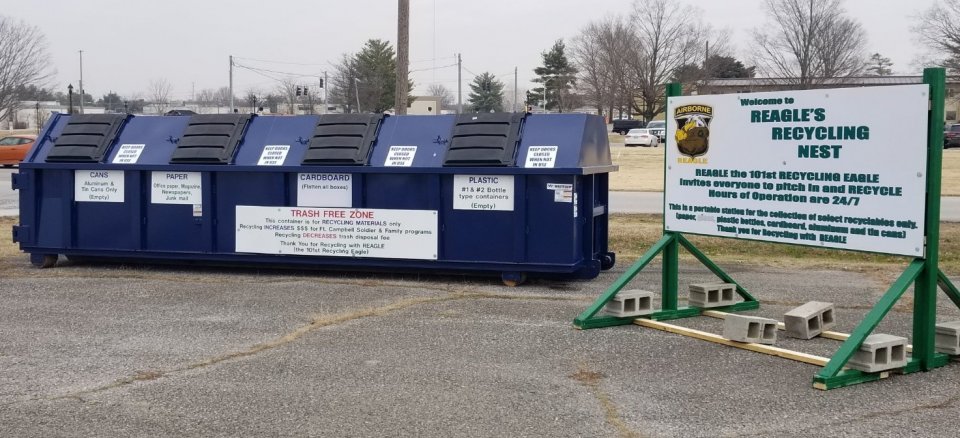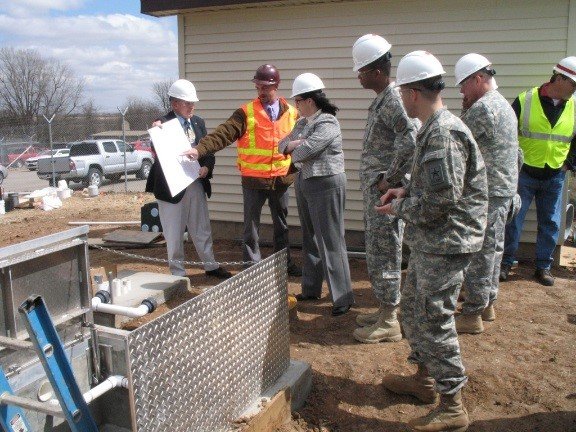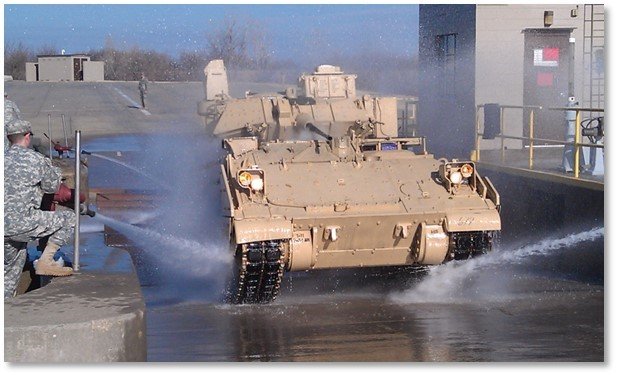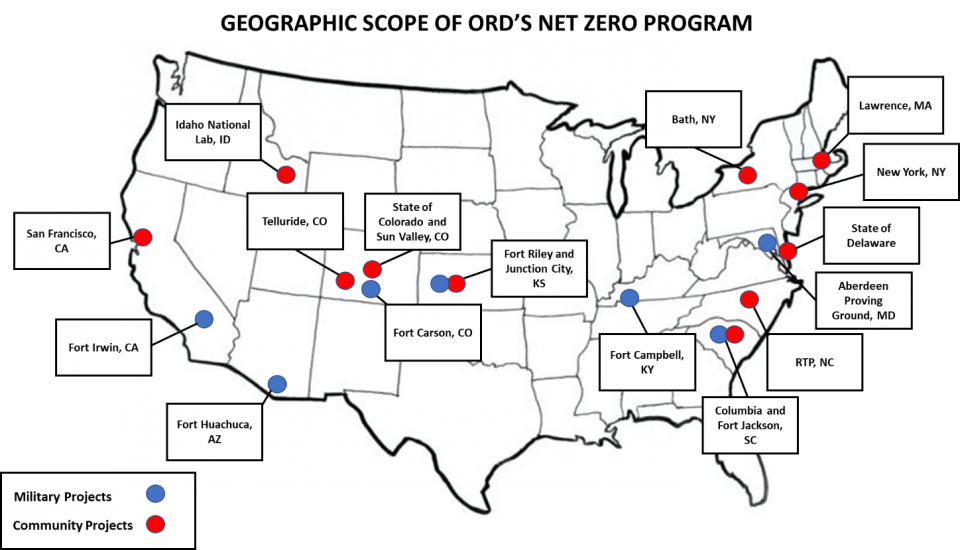Net Zero Past Projects
Net Zero is all about conserving water, reducing energy use, and eliminating solid waste to improve the environment, save money, and help communities become more sustainable and resilient. EPA researchers are accomplishing this goal by developing and implementing Net Zero strategies, approaches, and technologies like the ones listed on this site.
Past Net Zero Projects and Partnerships
All Net Zero projects are geared toward helping the military installation or community become more sustainable and resilient with an emphasis on taking a systems approach and protecting mission critical resources. They are not always “net-zero-target” focused, but must advance the state of the science and address the needs of our partners and stakeholders. EPA's Net Zero projects are focused on three general topic areas—water, energy, and waste—and the nexuses among them. Examples of some of these projects are described below.
Waste Decision Support Tool Demonstration at Fort Campbell

Each year, U.S. Army installations generate approximately 2.3 million tons of solid waste and are responsible for over 9.3 million metric tons of greenhouse gas (GHG) emissions. Moving towards net zero waste can save installations millions in waste collection fees and improve the viability of materials recovery programs.
In FY19 and FY20, EPA researchers worked with RTI International and Fort Campbell Department of Public Works (DPW) staff to analyze the cost and environmental tradeoffs of various waste management scenarios to increase waste diversion and avoid landfill disposal for Fort Campbell using the Municipal Solid Waste Decision Support Tool (MSW DST). This was the first application of MSW DST on an Army installation requiring some significant modifications to the base program to accommodate the unique mix of buildings and infrastructure on the relatively compact footprint of the base.

Several solid waste management scenarios were analyzed including baseline, increased composting and recycling, and maximum diversion with remainders sent to a nearby waste-to-energy plant. Total annual cost, energy consumption, and multi-media emissions were calculated using the MSW DST. In general, results showed that the higher the diversion of waste from landfill disposal (via materials recycling, composting and waste-to-energy) the better the life-cycle environmental performance, but the greater the potential management cost.

The current baseline waste management scenario at Fort Campbell was found to be the lowest cost, but also has relatively low diversion (at 18 percent) and high environmental impacts due to reliance on landfill disposal. It was found that at least 50 percent diversion could be achieved using recycling and composting when diversion was pushed to its maximum using existing programs and infrastructure.
However, further increase in diversion rates may require an initial investment in infrastructure or services that costs more than the status quo, although offering possible long-term benefits. The results of this study informed a new waste diversion campaign on base aimed at increased use of the recycling center and will be useful to other military installations and small/medium-sized U.S. cities.
Demonstration of Water Reuse Technologies


Fort Riley, Kansas
Today, we use drinking water for all of our household needs like taking showers, washing our cars, watering our lawns, and even flushing our toilets. Drinking water treatment is costly and energy-intensive; using potable water for all of our water needs is not a sustainable practice. In efforts to conserve potable water, water reuse (the beneficial reuse of treated wastewater) has become a research area of interest.

Wastewater treatment typically occurs in a single, large centralized treatment facility in most towns and municipalities, leading to increased infrastructure and pumping costs to transport the treated water back to sites of reuse.
Military installations and communities are seeking decentralized, energy-efficient alternatives to treat wastewater for reuse. In partnership with the Department of Defense (DoD) Environmental Security Technology Certification Program (ESTCP), EPA scientists demonstrated and compared different small-scale systems that tap into sewers and siphon wastewater to a nearby treatment unit for non-potable reuse.
The successful demonstration of these cutting-edge technologies provides reliable water reuse solutions to the U.S. military as well as communities and municipalities across the country seeking to reduce potable water consumption, costs, and energy use.
Additional Information: Meet EPA water reuse scientist, Jay Garland
Containment and Control of Contaminated Wastewater

Fort Riley, Kansas
When military vehicles return from training exercises, soldiers clean them with high-pressure water cannons on wash racks that capture large volumes of dirty water containing grease, oils, metals, dirt, and/ or mud, etc. Even if the vehicle were to become contaminated with a chemical, biological, or radiological (CBR) agent, the wash water could ideally be treated and reused at this facility.

This project tested a mobile water treatment trailer that inactivates and removes biological agents from large volumes of dirty wastewater so that the water can be reused for non-potable purposes. Results from this project helped advance technologies and treatment processes to decontaminate real-world dirty water.
Data from the project are available to cities, states, and DoD facilities that are seeking methods to treat large volumes of dirty water washed from vehicles, buildings, and personal protective equipment during an indoor or outdoor biological contamination event.
Additional Information: Meet EPA water security scientist, Jeff Szabo
Monitoring Water Quality in Hospitals

Fort Riley, Kansas
Hospitals and other large buildings have complex plumbing configurations that can result in slow-moving and temperature variant "hotspots" along the pipes that are more susceptible to water quality issues such as pipe corrosion, biofilm growth, and increased water borne pathogens. These issues may be exacerbated by the increasing use of water-saving technologies (such as low-flow water fixtures) in large buildings by communities desiring to conserve water. The potential public health risk from waterborne pathogens is of special concern in hospitals, who serve vulnerable populations.
This project seeks to develop a better understanding of how water quality in large hospital buildings can be optimized to protect public health while conserving water. EPA scientists will evaluate water quality data from an existing hospital and a new LEED-certified hospital with low-flow fixtures in Ft. Riley, KS to develop a site-specific water monitoring plan. The results of this study will provide a better understanding of how water-saving technologies impact water quality in large buildings and how to optimize water quality monitoring in these buildings. This knowledge can be applied to other hospitals, healthcare facilities, and large municipal buildings.
Green Infrastructure Demonstration and Education

Fort Riley, Kansas
Increasing pressure on the nation’s water supply and infrastructure have prompted the development of new stormwater management practices referred to as green infrastructure (GI). The Army constructed a permeable pavement parking lot behind Seitz Elementary School on Fort Riley, KS, that EPA scientists are monitoring along with the school’s existing stormwater capture-and-use system to gain a better understanding of GI performance and how it changes with time. Students at the elementary school will be given opportunities to participate in the research and GI approaches to stormwater management will be incorporated into the school’s curriculum to help meet Next Generation Science Standards.
This project will further the understanding of GI technologies for sustainable water resource management, reduce Fort Riley’s water footprint, and explore how GI can be used as an educational platform within schools and communities.
Additional Information: Demonstrating Net Zero green infrastructure technologies on Fort Riley, KS Fact Sheet
Water Conservation Education and Outreach

Fort Riley, Kansas
While new, low-cost technological advancements are essential for improving our ability to manage water more efficiently, the social drivers of water demand and water uses practices must also be addressed to promote a balanced, long-term approach to water conservation. EPA scientists assessed the effectiveness of water conservation and outreach to curb water demand and change water use behavior of the Ft. Riley community. Outreach tools included general conservation education, targeted messages, prompts, water usage feedback from meters, and surveys.
As a result of the interventions, there was an 11% decrease in residential potable water use and EPA now has a better understanding of water usage patterns and behaviors of families living on-post. The Army can use these results to establish water conservation interventions in communities at other bases, and civilian communities and municipalities can gain insight on effective mixes of targeted outreach and education to reduce water demand and change water use behavior.
Additional Information: Meet EPA social scientist, Michael Nye
Sustainable Materials Management

Columbia and Ft. Jackson, South Carolina
Sustainable materials management, the use and reuse of materials in the most productive and sustainable way across the entire life cycle, requires incorporating expertise and perspectives from multiple sectors to achieve the Net Zero Waste goals. EPA initiated a multi-sector partnership to research the best options for sustainable materials management in Columbia, SC with an emphasis on organic waste management (such as food waste).
An offshoot of this project explored the use of cutting-edge food waste characterization technology in Army dining facilities at Ft Jackson. As a result of the project, the Army better understands the drivers of food waste in Army kitchens (primarily over-production), and over 6 tons of unused food identified in the project was donated to local food banks.
Systems-Based Models for Sustainable Decision Making



Aberdeen Proving Ground, Maryland and Fort Carson, Colorado
Finding long-term solutions to Net Zero sustainability challenges requires optimally balancing the three pillars of sustainability that form the Triple Bottom Line: economy, society, and the environment. EPA is developing and testing systems-based models that account for the complex relationships between our economic, social, and environmental systems as military installations and communities pursue Net Zero Water, Energy, and Waste simultaneously.
To achieve optimal resource management, EPA scientists are quantifying the benefits, trade-offs, and synergies associated with a coordinated approach to Net Zero. For example, technologies used to achieve Net Zero Water could be energy-intensive and negate any progress made toward Net Zero Energy. On the other hand, using waste diverted from landfills to produce energy works towards both Net Zero Waste and Net Zero Energy.
In Aberdeen Proving Ground, MD, EPA scientists are applying a Triple Value Simulation (3VS) model to explore the environmental, economic, and societal outcomes of potential scenarios and solutions that could be implemented to achieve Net Zero goals on site.
Similarly, in Ft. Carson, CO, EPA scientists are using another systems-modeling approach to analyze site-specific energy, water, and solid waste data and identify the interconnections, dependencies, and trade-offs among these sectors. These systems-modeling approaches can provide suggestions to decision-makers at other military installations and communities on how to optimally achieve their Net Zero goals.
National Scope Program Support

Net Zero is truly a coast-to-coast program delivering solutions-oriented science in military and civilian communities across the U.S. aligned with ORD’s national research programs. The program offers unique access and partnership-building expertise in communities and places where ORD does not usually work.
There are six Net Zero projects currently underway spanning two National Research Programs and three ORD Laboratories, including regional and program office personnel as well as partners in military communities, other federal agencies, states, and local communities. Some of the locations indicated above have multiple projects/ products associated.
Fourteen distinct projects have been completed since the program began in 2011.
Past Outreach & Workshops
EPA’s Net Zero efforts are helping communities find ways to reduce their water, energy, and waste footprints while fostering economic growth and promoting citizen health and well-being.
Campus-Community Sustainability Partnerships (CCSP) Workshop - 2015
In July 2015, San Francisco State University hosted a event called the ”CCSP Workshop for Advancing Sustainability” where EPA introduced the Campus-Community Sustainability Partnerships (CCSP) model and other EPA tools and approaches for advancing sustainability to over 75 university, community, federal, and industry representatives.
In the CCSP model, a university provides direct support to a community to achieve the community’s self-identified sustainability goals. University and local government representatives interested in launching CCSP programs spent time identifying the most appropriate EPA tools for their sustainability projects.
Three potential CCSP partnerships were identified between California State Universities and city governments (for example, The City of Santa Rosa and Sonoma State), and EPA will continue meeting with participants interested in adopting the CCSP model and applying EPA tools, like EnviroAtlas, the National Stormwater Calculator, and the Managing and Transforming Waste Streams Tool to their community or university sustainability projects.
- Learn more about EPA Net Zero related projects.
DOE/NSF/EPA Energy-Positive Water Resource Recovery Workshop -2015
EPA, the National Science Foundation (NSF), and Department of Energy (DOE) began exploring opportunities to advance Net Positive water treatment and resource recovery. Which is why, on April 28-29, 2015, DOE/NSF/EPA jointly hosted the “Energy-Positive Water Resource Recovery” workshop, to promote discussion between municipalities, government, industry, and other key stakeholders on accelerating the development and use of water resource recovery facilities (WRRFs).
WWRFs add food waste (including fats, oils, and grease) to under-capacity anaerobic digesters in wastewater treatment plants to produce energy in the form of biogases. This approach potentially enables WWRFs to not only achieve Net Zero Energy, but also Net Positive Energy.
One of the primary requests from workshop participants was the need for more test beds to demonstrate these new water resource recovery technologies; EPA/NSF/DOE began investigating ways to make this happen.
Promoting Sustainable Communities through Net Zero Strategies - 2014
In Feb 2014, EPA hosted the workshop "Promoting Sustainable Communities through Net Zero Strategies" where experienced community leaders and Federal agencies gathered to discuss barriers, solutions, and lessons learned from implementing Net Zero water, waste, and energy strategies at various scales.
They also discussed ways in which EPA and other Federal agencies can support community sustainability efforts. As a direct result of suggestions from community leaders during the workshop, EPA is pursuing several projects that will aid communities in their Net Zero Water, Energy, and Waste efforts.
For example, EPA began developing a web-based search tool that connects users to EPA’s green infrastructure decision-making resources.
Project Topic Legend
| Icon | Defn Links |
|---|---|

|
Net Zero Water |

|
Net Zero Energy |

|
Net Zero Waste |
